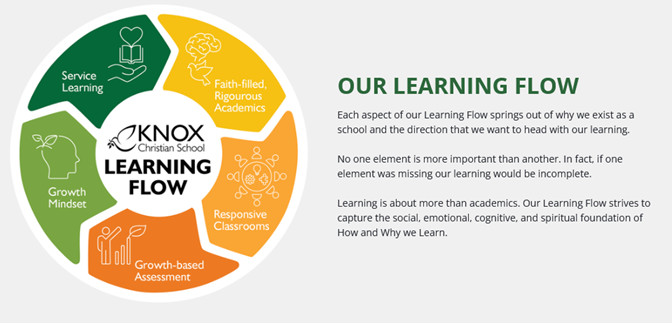Designing Professional Learning that Aligns with Your Learning Vision
By Justin Cook | February 7th
Many of you have had a chance to interact with my colleague and friend, Steven Levy. Steven, and his wife, Joanna, were keynote speakers at a past educators convention where the theme was “Leading with Love.” In his opening keynote address, Steven stated:
“How do we know what love looks like in our schools? In the same way we know about God through the way he was embodied in Christ, we know about our schools’ love by the practices and the cultures that we create in our schools. At the very heart of it is engagement.” (Click here to watch the keynote; Steven’s comments are around 11:07.)
Steven shared that leading with love means deepening cultures and practices in our schools that lead to engagement, and not just to well-behaved compliant students who do work for a grade.
How does a school get specific and focused in pursuing these practices? What practical structures and tools can a school use to deepen its own commitment to a learning vision?
One example of a school that has explicitly articulated a learning vision is Knox Christian School (Bowmanville) with their “Learning Flow”:

As Knox states on their website, “Every aspect of our Learning Flow springs out of why we exist as a school and the direction that we want to head with our learning.” With this core clarity in the alignment of their learning vision and school mission, Knox is primed to know what specific priorities to name for deepening their ability to enact their learning mission.
Your school’s learning vision needs to arise out of your own school’s history and pedagogical priorities. Edvance affiliate schools pursue a wide range of explicit learning designs with fidelity, including classical Christian education, Teaching for Transformation, project-based learning, or a hybrid of learning designs like Academia Stella Maris’s use of Charlotte Mason, Montessori, and Classical education in their curriculum map. Many of these specific pedagogies are also highlighted in the Christian Deeper Learning blog, which features a number of great contributors (and personal friends!).
Once a school has clearly articulated its learning vision, the second task is to plan and implement a dynamic staff professional learning program that deepens the school’s ability to enact its own learning priorities. Edvance has a tool, the work plan, that can help with that professional learning planning process:
A Professional Work Plan names two to four key goals that a school staff wants to pursue over the course of a school year. The goals should be clear, specific, and measurable. As an example, you might consider goals like the following (adapted from Halton Hills Christian School several years ago):
- To incorporate Responsive Classroom techniques and philosophy into the daily schedule and culture of the school.
- To deepen best practices in our math curriculum at all grade levels, including the idea of mathematical modelling highlighted from Christine Suurtamm and the new curriculum.
- To have our school be a place of invitation, welcome, and safety where “soul food” is shared with all.
- To design and implement at least one significant PBL project according to the Academy model and share the learning at our spring celebration of learning.
The work plan also articulates how these goals will be pursued. A template for accomplishing a specific professional learning goal might look like this:

Deepening practice and furthering your learning mission takes sustained time and collaboration. As we look to the future of education beyond the pandemic, I urge you to consider creating a professional learning work plan for 2022/2023 that uses valuable professional learning time wisely to further your school’s learning vision.
This year, Edvance is supporting a number of schools in various curriculum working groups, including mapping your school’s curriculum, auditing your curriculum map for diversity and belonging, and reviewing your school’s literacy curriculum for revision or replacement. The work of these groups can be shared; schools that are not participating directly in these groups can still contact me to learn more about how to engage in these priorities.
For next school year, Edvance is considering launching a leader’s working group to support a cohort of schools to design an explicit learning vision and/or implement a work plan to deepen that learning vision. If this is something you’d be interested in joining, I’d love to hear from you. Until then, perhaps you might consider these questions about your school’s learning vision:
- What is your mission statement? Do you have it memorized? Is it visible on your school documents? How does that mission statement connect to a specific learning vision, like the Knox Christian School example above?
- What common language would you expect your colleagues to name as part of your school’s learning vision? Does everyone share a commitment to that language?
- What specific practices would you expect to see regularly in classrooms that reveal this common learning in action?
- What is one specific story you could share that brings that common language and practices to life?
- Does your staff know what the current priority is for learning? Has your staff discussed what makes for good pedagogy?
Justin Cook is the Director of Learning at Edvance.

